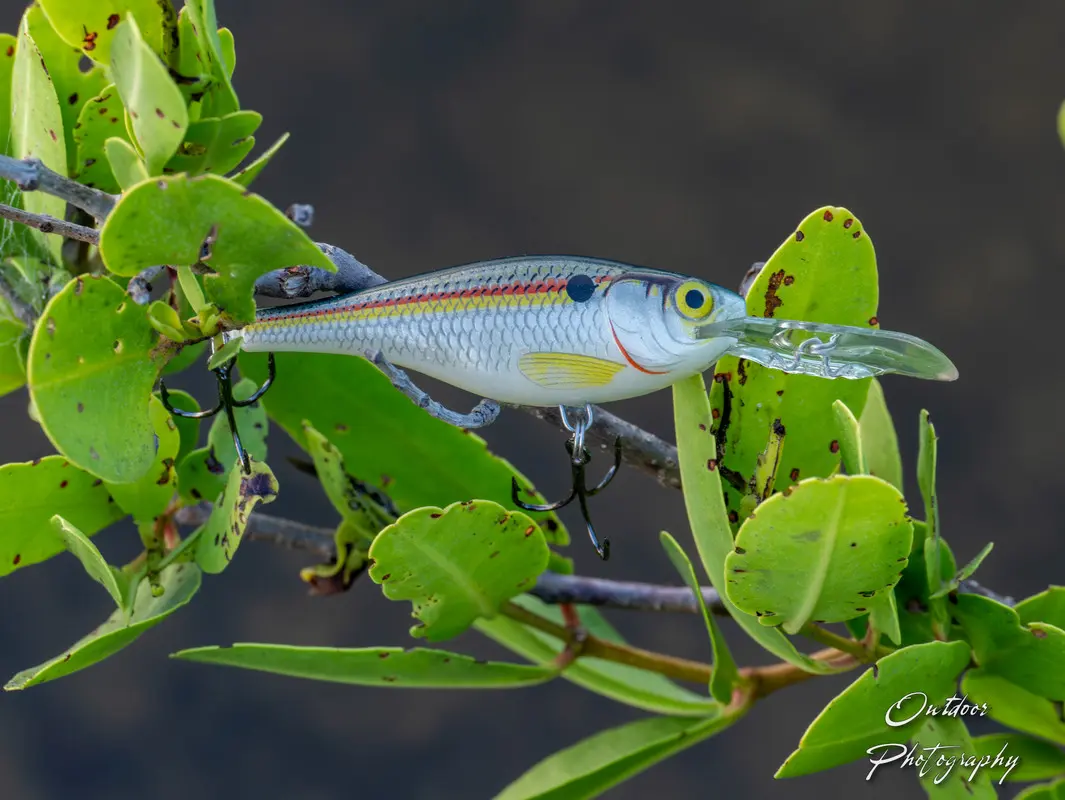Tackle: Lure - Crankbaits (Medium Diving)

Summary
Medium diving crankbaits typically run between 5 and 15 feet, making them versatile tools for covering mid-depth structure and triggering reaction strikes from bass and other predatory species. These baits shine when worked over mid-season offshore humps, along rocky ledges, and in transition zones where baitfish suspend. Below, we’ll dive into rod, reel, and line choices, outline three prime scenarios for medium divers, and present a chart of five popular medium diving crankbaits with their specs.
Gear Setup for Medium Diving Crankbaits
Rod Length and Action
Most anglers favor a rod length between 7' and 7'6" for medium divers. Composite rods blending graphite and fiberglass are preferred because the fiberglass tip acts like a “rubber band,” smoothing out casts and delaying hooksets just enough to let the fish fully engulf the lure. Moderate to moderate-heavy power with a moderate action tip provides enough backbone for hook penetration while offering the flex needed to cushion headshakes and avoid pulled hooks.
Reel Speed and Gear Ratio
A baitcasting reel in the 100–200 size class with a gear ratio between 6:1 and 7:1 is ideal for medium divers, offering the versatility to creep the bait slowly or speed it up to provoke reaction strikes. During colder water periods, dropping to a 5:1 ratio can help force a slower, more deliberate retrieve when fish are lethargic.
Line Selection
Fluorocarbon in the 10–12 lb test range is the go-to for most medium diving crankbait setups, as its density helps the lure reach its advertised depth and offers excellent abrasion resistance around cover. While monofilament can be useful for shallower cranking or dual-purpose rods, fluorocarbon’s low visibility and minimal stretch make it superior for mid-depth applications.
Three Prime Scenarios for Medium Diving Crankbaits
-
Mid-Season Offshore Humps
When bass school on offshore humps in 10–15 ft of water, medium divers can be quickly worked over the contour of the structure, triggering aggressive reaction strikes as the bait deflects off the hump’s edges. The 6:1 reel allows anglers to maintain contact and feel for subtle hits as the lure bounces over rocky transition zones. -
Rocky Ledges and Points
Fishing rocky ledges that drop from 8–12 ft to deeper water, medium divers excel by running just above the ledge lip, imitating fleeing prey. -
Grass-to-Open Water Transitions
In spring or early summer, bass hold on the fringes of submerged grass flats at 6–10 ft depth. Medium divers can be cranked parallel to the grass edge, probing both cover and adjacent open water to locate active fish.
Popular Medium Diving Crankbaits
| Crankbait Model | Length | Weight | Diving Depth |
|---|---|---|---|
| Rapala DT10 Series | 4.0" | 1/2 oz | 10 ft |
| SPRO Mike McClelland RKcrawler MD 55 | 2.2" | 5/8 oz | 6–12 ft |
| Megabass Sonicside Crankbait | 3.3" | 1/2 oz | 8 ft |
| Berkley Frittside 7 | 3.5" | 7/16 oz | 7 ft |
| Storm Original Wiggle Wart | 3.1" | 1/2 oz | 8–10 ft |
Notes:
- The Rapala DT10 is a proven round-bill diver with tight wobble, diving to 10 ft with a long-lip design.
- SPRO’s RKcrawler MD 55 combines a sinking action with wobble to land in the 6–12 ft range, ideal for ledges.
- The Megabass Sonicside is prized for its silent, wide wobble at 8 ft, triggering strikes on pressured fisheries.
- Berkley’s Frittside 7 offers a tight action and precise 7 ft diving depth for grass edges.
- Storm’s Wiggle Wart dives 8–10 ft with a wobble that deflects well off cover.
The World's Most Complete Fishing Resource
We're building the ultimate fishing encyclopedia—created by anglers, for anglers. Our articles are created by real experienced fishermen, sometimes using AI-powered research. This helps us try to cover every species, technique, and fishing spot imaginable. While we strive for accuracy, fishing conditions and regulations can change, and some details may become outdated or contain unintentional inaccuracies. AI can sometimes make mistakes with specific details like local access points, parking areas, species distributions, or record sizes.
Spot something off? Whether it's an incorrect boat ramp location, wrong species information, outdated regulations, or any other error, please use the "Help Us Improve This Page" section below. Your local knowledge makes this resource better for every angler.
Explore Related Topics
Discover more articles to deepen your knowledge
Curating articles for you...
Create your own Research Page using AI
Try our AI assistant for free—sign up to access this powerful feature